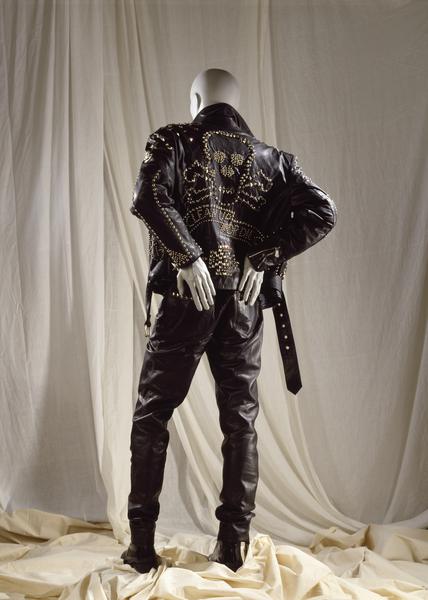1990-2000: A Quickening
In 1989 the New York
Times used the words, 'Fast Fashion' to describe ZARA's 'Quick
Response' model, which initially was created for car manufacturing in Japan. The
model was adopted to improve efficiencies in fashion manufacturing and supply
chains. The Internet accelerated the speed of fashion too. By the end of the
millennium a perfect storm was brewing for the fashion industry to become a huge
contributor to the environmental crisis.
Katharine Hamnett highlighted in
her designs the stark facts about the environmental degradation caused by
fashion, but she also showed the human welfare aspects too. As there were 270,000 farmer suicides between 1995 and 2013, caused by desperation due to spiralling repayment costs of pesticides
and seeds sold on credit - the collection Hamnett created only used organic
cotton. This designer therefore set an early example for others to follow.
2000-2010: Momentum
ASOS and Net-a-Porter both opened
their online doors in 2000, a defining point in the rise of online shopping. However Marks and Spencer, one of UK's most well known retailers, set out 100 bold,
measurable commitments in 2007, in its 'Plan A' initiative. Named because CEO at the time
Stuart Rose said, 'there is no Plan B' when it comes to the environment. Aims included: limiting the impact
of climate change by using renewable energy and efficient production processes; extending a commitment to fair-trade cotton; supporting farmers and encouraging
energy conservation in the care of clothes by customers through the
introduction of 'wash at 30 degrees' labels. Post-purchase responsibility shows
customers have a critical role in achieving sustainable habits. It all starts with what we buy as well as how we look after and discard clothes.
Whilst the pace sped up to address
the urgent need for a more sustainable approach to fashion, ever-cheaper
fashion was accelerating, a vivid example of fast fashion was witnessed when
Primark launched in 2007 - shoppers were seen trampling over each other for
bargains, an iconic image of crazy consumption.
Customers fall over each other in order to buy bargains
2010 Onwards: What has really
changed?
By 2010, the call for the fashion industry to address sustainability was rising in volume. In 2011 the Greenpeace 'Detox Campaign' challenged many of the world's most popular fashion brands to eliminate the release of all hazardous chemicals from their production processes. Detoxing fashion continues to be problematic as many brands struggle due to selling outsourced products.
An example of an initiative that has been successful is Fashion Revolution's, 'Who made my clothes?'. This was created in response to the terrible and fatal Rana Plaza collapse back in 2013. Work related deaths of garment workers in developing countries continues, so it is imperative that Fashion Revolution's simple question is now a worldwide campaign. Brands are under much more scrutiny than they have ever been before. Transparency and traceability both have grown in importance for all brands and in the words of Joanna Macy, an environmental activist, this is 'a time of great turning', from a self destructing society to a life-sustaining society.
Even though there is valuable work going on to demand a better fashion world, the UK’s Fashion Industry is worth £26 billion and provides 800,000 jobs to the economy, making it the UK’s largest creative industry. Completely eradicating fashion from the world isn't a sensible solution, fashion just needs to reinvent itself and become more circular, fairer, sustainable and long-term. If you are interested in fashion or have just been on social media in the past few days you will know that London Fashion Week is in full swing. A few years back I would have wanted nothing more than to be with the people in the front row, however now I would much rather try to change the industry to become more caring and more curious about clothes. After I heard people had protested outside LFW I thought 'WOW this could be change' but I don't know if stopping fashion altogether is the best option, maybe it is, maybe it isn't. Fashion is a huge industry and employes a lot of people who depend on it for their livelihoods. If you want to read more about the 'die-in' that Extinction Rebellion held outside London Fashion Week I recommend this article.
I think it will take a lot more time for real change to permeate the fashion industry, but changes have started, they just need to increase and continue.
An example of an initiative that has been successful is Fashion Revolution's, 'Who made my clothes?'. This was created in response to the terrible and fatal Rana Plaza collapse back in 2013. Work related deaths of garment workers in developing countries continues, so it is imperative that Fashion Revolution's simple question is now a worldwide campaign. Brands are under much more scrutiny than they have ever been before. Transparency and traceability both have grown in importance for all brands and in the words of Joanna Macy, an environmental activist, this is 'a time of great turning', from a self destructing society to a life-sustaining society.
Extinction Rebellion 'Die-in' at LFW
I think it will take a lot more time for real change to permeate the fashion industry, but changes have started, they just need to increase and continue.
Fashion Revolution's Fanzine
Hope you learnt something new and enjoyed this post! Have an amazing week!
All my love
Ames
xxx







No comments:
Post a Comment